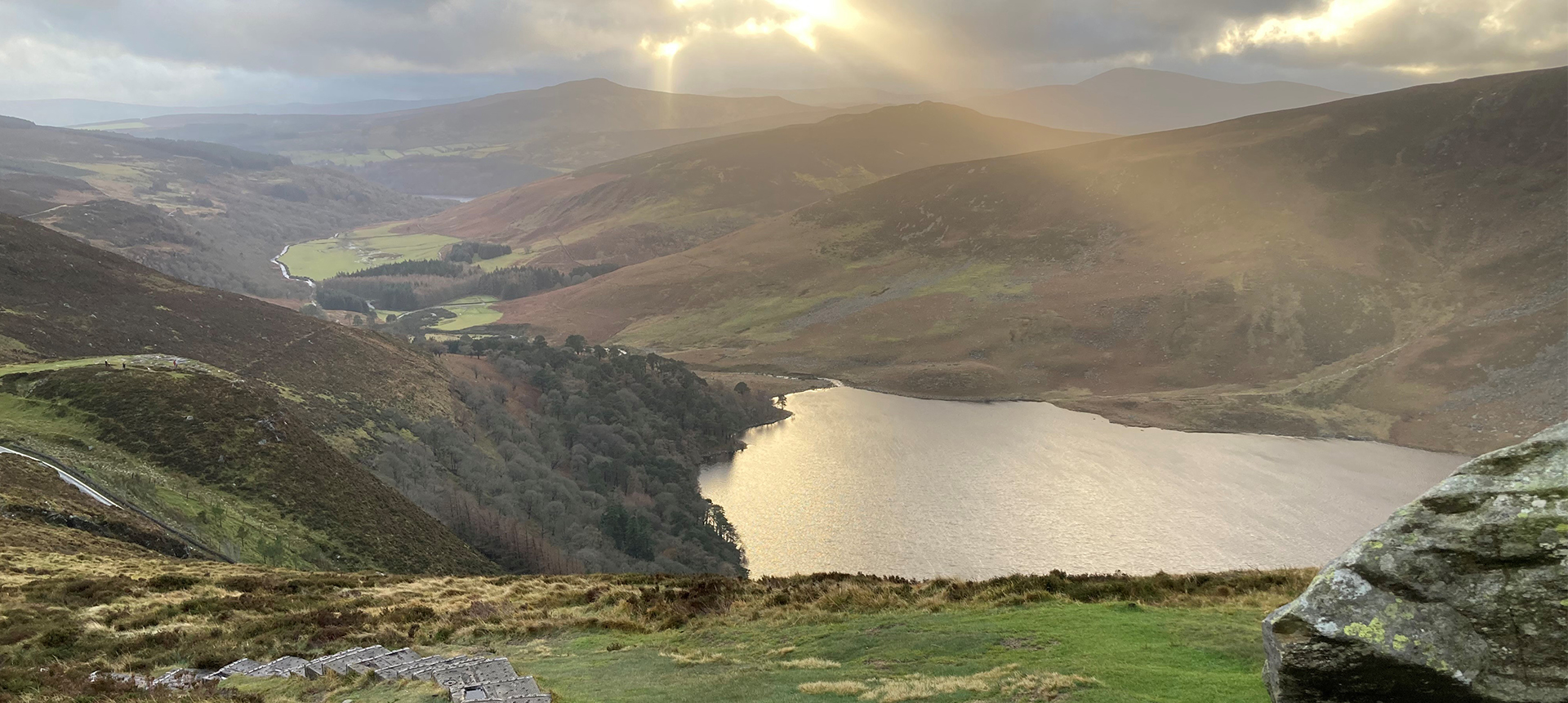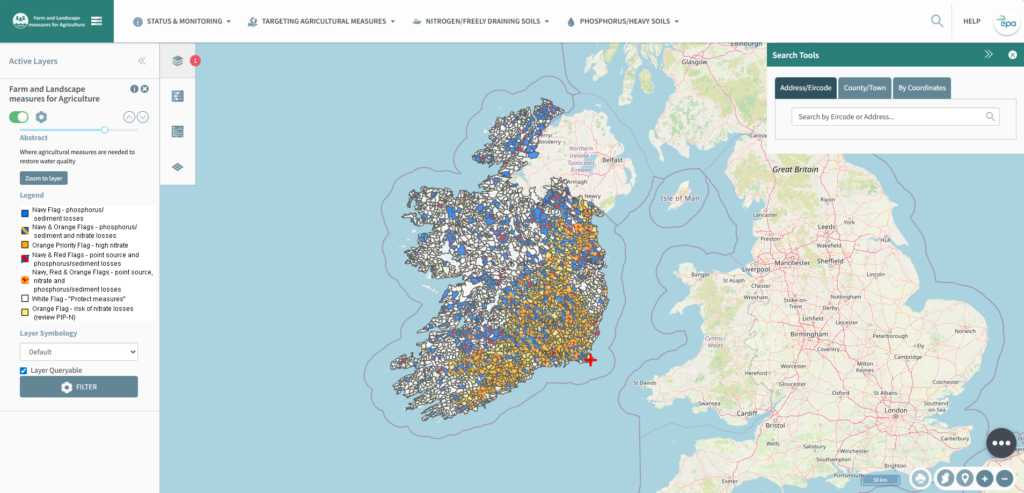
Farm and Landscape measures for Agriculture (FLAG) maps
A farmer-friendly EPA map, Farm and Landscape measures for Agriculture (FLAG) is now available. This map was previously called the Targeting Agricultural Measures map. The FLAG map has key information that will help farmers and other landholders understand their local water quality and where action needs to be taken.
Farm and Landscape measures for Agriculture (FLAG) mapping tool
The FLAG mapping tool has information under these menu headings:
- Status & Monitoring – View current water quality status and monitoring station locations
- Targeting Agricultural Measures – Explore two key layers:
- Farm and Landscape Measures for Agriculture – shows pollutants in waterbodies impacted by agriculture.
- River Agricultural Pressures – highlights where agriculture is a significant pressure on water quality.
- Nitrogen / Freely Draining Soils – Identify areas at risk of nitrogen loss due to well-drained soils. (Pollution Impact Potential Maps for Nitrogen/Freely draining soils)
- Phosphorus / Heavy Soils – Locate areas prone to phosphorus and sediment runoff from heavy soils
- This includes the Pollution Impact Potential Map for phosphorus, along with additional layers for overland flow pathways and delivery points that help target interception measures.

The FLAG map is currently being used by local authorities to target agricultural inspections, to guide discussions at farm scale between farmers and their advisors about what voluntary measures should be taken, and to support the implementation of the Better Farming for Water Campaign, the Farming for Water EIP, agri-environment schemes, results-based payments programmes and various other water quality improvement projects.
Targeting Agricultural Measures
The Farm and Landscape Measures for Agriculture layer (under the Targeting Agricultural Measures tab) identifies the issue or pollutant in waterbodies impacted by agriculture.
Where agricultural measures are needed to improve water quality, one or more colour flags indicate the types of water quality issues in that area. This helps farmers in these areas to focus on actions that are likely to have the best water quality results.
The map has white for ‘Protect’ in areas where there are no agricultural significant pressures on water quality; in these areas it is still important that everyone takes action to continue to protect water quality.

FLAG Map leaflet
A downloadable flyer is available to help farmers and advisors understand how to use the FLAG map in practice. It includes:
- A visual guide to help you navigate the FLAG mapping tool
- Clear explanations of the different map layers and what they show
- Links to support schemes and advisory services to help take action
What’s new in the 2025 Update
- Incorporates 2022–2024 chemistry monitoring data
- Updated methodology for identifying ammonium/farmyard pollution (threshold increased to 0.065 mg/l)
- Slight increase in flagged waterbodies due to improved data and local authority input
- Areas with phosphorus/sediment issues remain consistent with previous assessments
Read more: New updates to EPA tools for targeting agricultural measures to protect water quality
Pollution Impact Potential (PIP) Maps for nitrogen and phosphorus
Take Action
The video below from the Irish Farmers Association and Teagasc shows actions farmers can take to improve water quality on their farm.
- Apply manure, slurry and fertiliser correctly.
- Introduce an extended buffer zone.
- Locate water troughs away from waterways.
- Implement a nutrient management plan.
- Introduce mixed species & clover to your grass swards.
You can learn more here: SmartFarming | Sources and Solutions – Link Between Our Soils & Water Quality
Teagasc Signpost Seminar – Water quality and agriculture – challenges and opportunities
A Handbook of Source Protection and Mitigation Actions for Farming
The National Federation of Group Water Schemes has produced this very useful and detailed guide to on-farm actions to improve water quality: NFGWS_handbook_farming-mitigation-actionsFebruary2021.
Who is involved?
Quite simply, everyone in Ireland has a role to play. This can be from something as simple as making sure you don’t pollute your local stream, or a local community working together to establish a Rivers Trust to enhance the rivers and lakes in their area, to a Government Department or Agency helping a Minister implement a new policy to help protect and enhance all our water bodies.
This website has been developed and is maintained by the Environmental Protection Agency, and is a collaboration between the Department of Housing, Planning and Local Government, the Environmental Protection Agency, and the Local Authority Waters Programme.

Local Authority Waters Programme
The Local Authority Waters Programme coordinates the efforts of local authorities and other public bodies in the implementation of the River Basin Management Plan, and supports local community and stakeholder involvement in managing our natural waters, for everyone’s benefit.

Environmental Protection Agency
The EPA is responsible for coordinating the monitoring, assessment and reporting on the status of our 4,842 water bodies, looking at trends and changes, determining which waterbodies are at risk and what could be causing this, and drafting environmental objectives for each.

Department of Housing, Local Government and Heritage
The Department is responsible for making sure that the right policies, regulations and resources are in place to implement the Water Framework Directive, and developing a River Basin Management Plan and Programme of Measures to protect and restore our waters.
